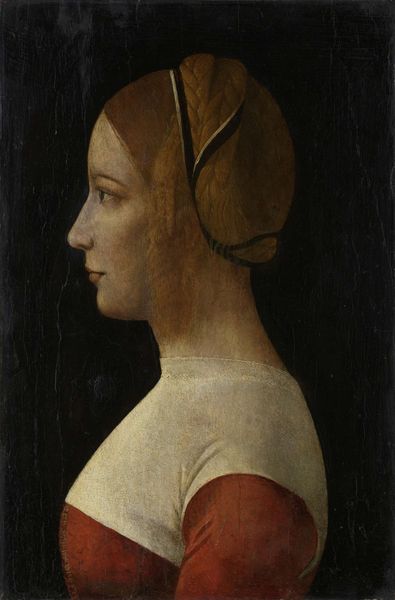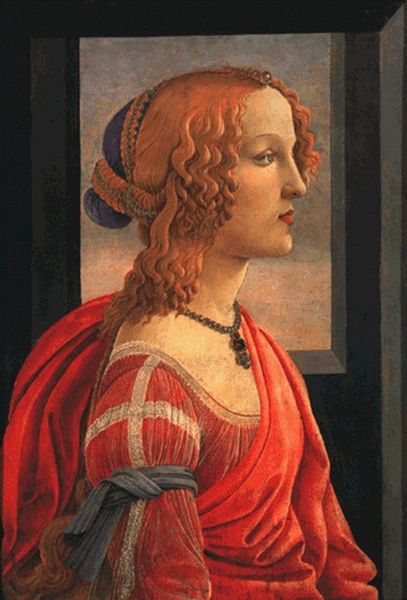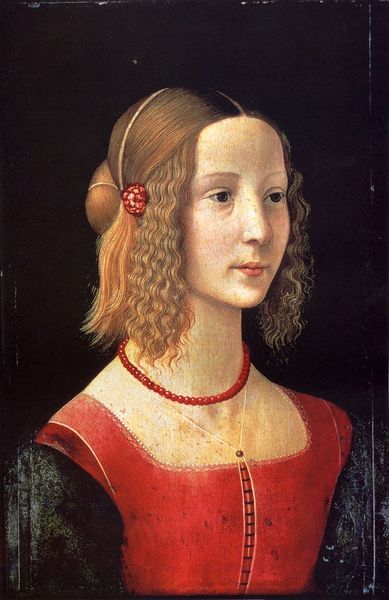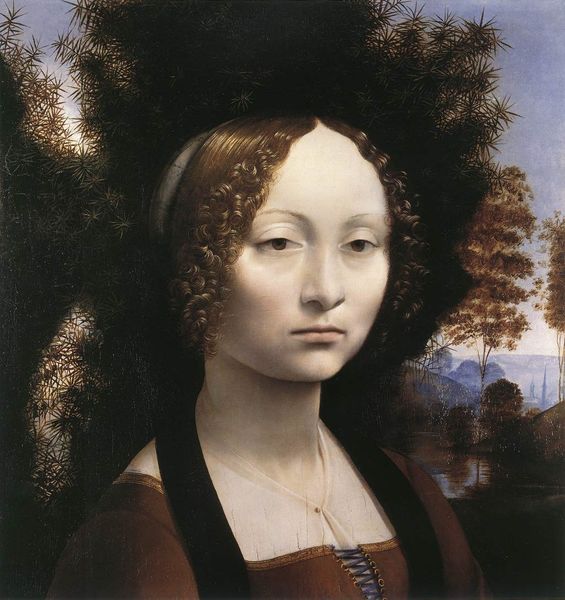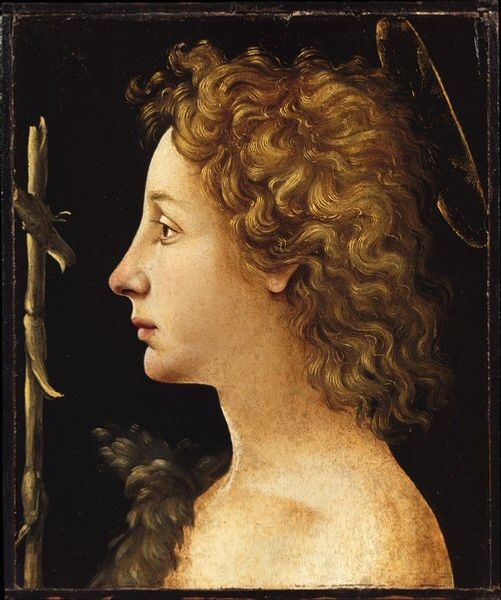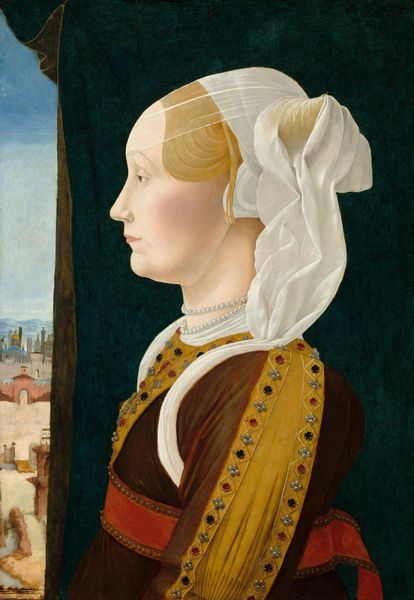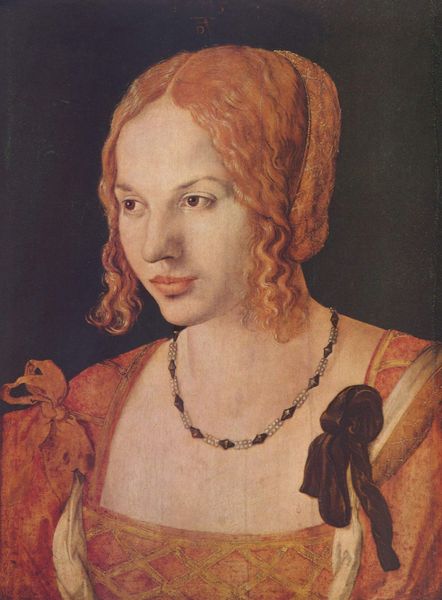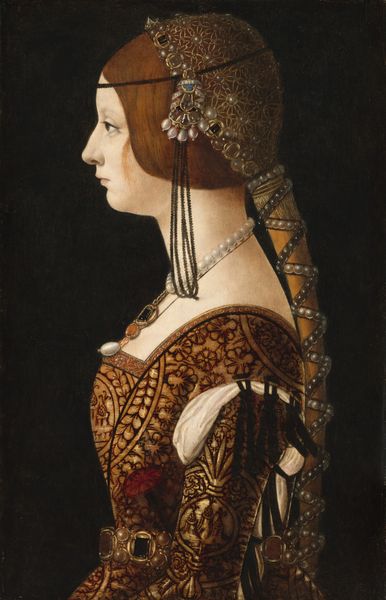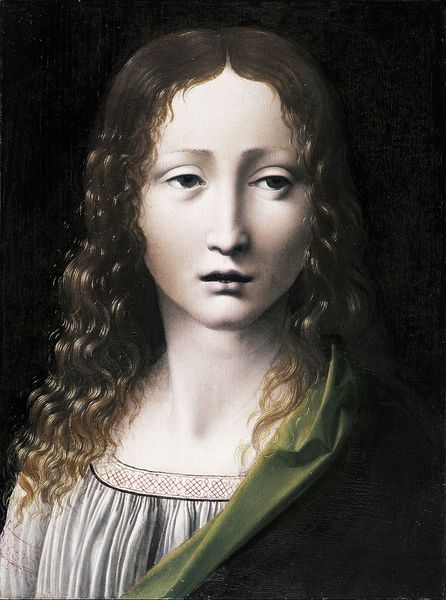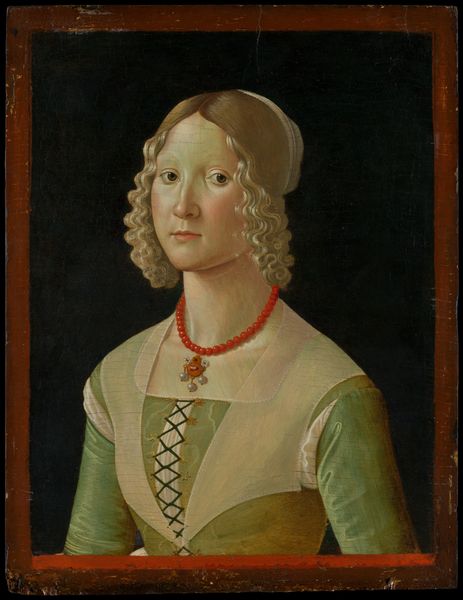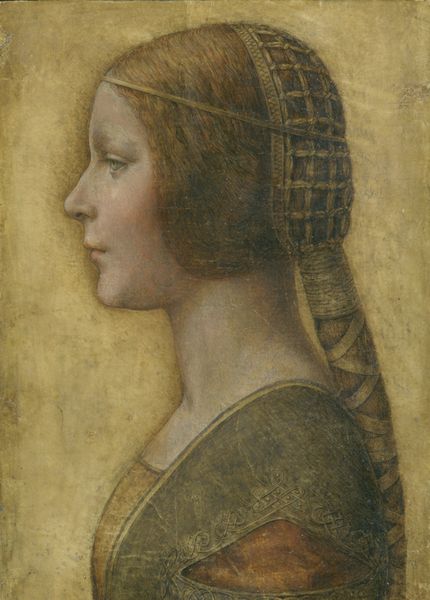
painting, oil-paint
#
portrait
#
painting
#
oil-paint
#
figuration
#
11_renaissance
#
oil painting
#
italian-renaissance
Dimensions: 47.5 x 35 cm
Copyright: Public domain
Curator: We’re now looking at Sandro Botticelli's “Portrait of Simonetta Vespucci," painted around 1480 using oil. What strikes you most about this work? Editor: Her gaze—it’s distant, almost melancholic. The severe profile, set against such a stark background, creates a real sense of isolation. Curator: Indeed. This portrait, also referred to as "Portrait of a Young Woman," is ripe for interpretation through a contemporary feminist lens. We might consider how women were often portrayed passively during the Renaissance, objects of beauty for the male gaze. Editor: The pearls woven into her hair also suggest layers of meaning. Pearls often symbolize purity, wealth, status, marriage, or perhaps a connection to the divine. Is Botticelli placing her simultaneously within an earthly and spiritual realm? Curator: Precisely! The iconography tells us much about the subject and her position in society. Considering the historical context, Simonetta Vespucci was a celebrated beauty of her time, a muse to many artists. But let’s also remember the portrait likely served as a signifier of status for the Vespucci family. Was she being actively objectified to elevate their lineage? Editor: Perhaps. The colors are muted, and create a powerful representation of idealized beauty during the early Renaissance, before high Renaissance color palettes came to being. It's also worth looking into that incredible plait! Is she setting or following a fashion, sending a coded message? The image invites many questions around identity formation in that historical context. Curator: And the fact that this profile view echoes ancient Roman coinage – there's a deliberate reference to antiquity and to ideals of beauty connected to power structures throughout time. Botticelli is situating her within a specific history and a specific, almost rigid ideal. Editor: Looking at this portrait again, I notice both an admiration and a confinement. Botticelli memorialized her, yes, but he also seemed to trap her, or at least control the memory of her image within his visual vocabulary. Curator: I agree. And maybe by critically examining portraits like this, we can uncover both their artistic value and the underlying power dynamics that they represent. Editor: It offers insight, I think, into the historical meanings attached to female beauty and their enduring symbolic power. It still has meaning now, doesn't it?
Comments
No comments
Be the first to comment and join the conversation on the ultimate creative platform.

